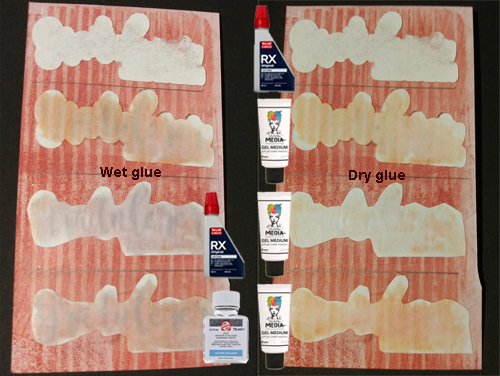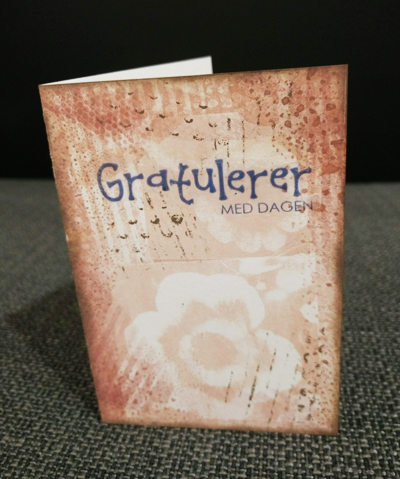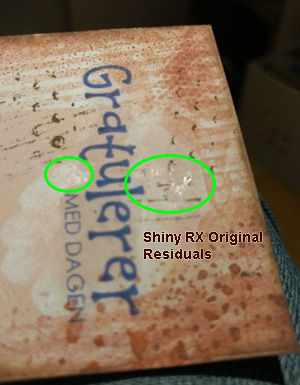I find many inspireing examples of using image transfer technique on top of gelli plate arts. Here is a beautiful video example from Birgit Koopsen at Gelli Arts transferring a photo on top of acrylic paint monoprint.
My favorite gel medium paint is watersoluble dye ink. It is a challenge to do image transfer on water soluble ink as water is applied. I will try to solve the problem, not the ink. I will use the technique to apply small, crisp text to cards. This is my laternative to stamps. I can have these “stamps” in any design to a extreemly low cost.
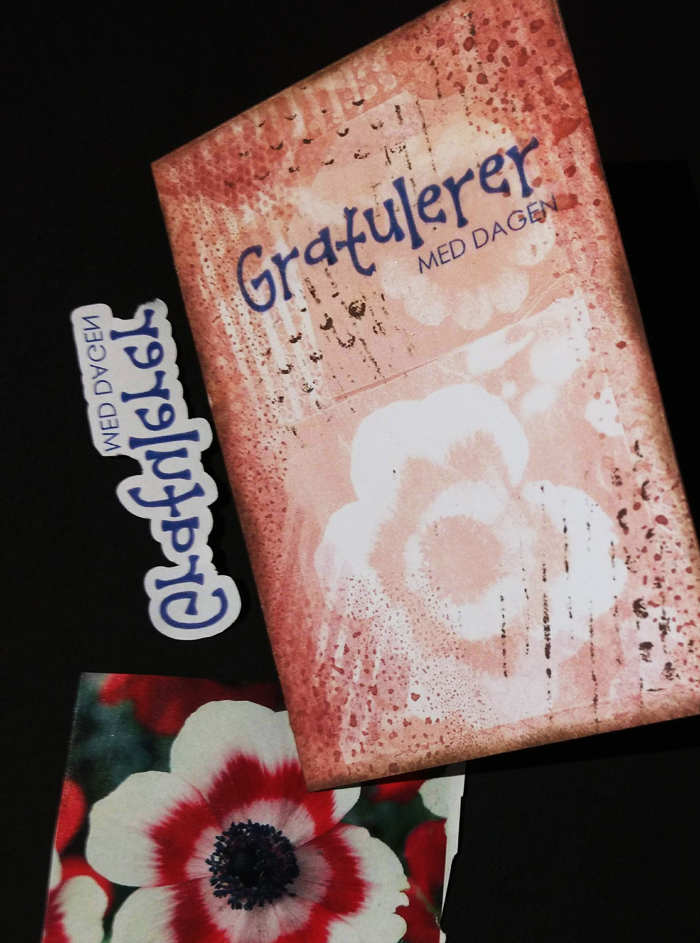
Materials to use
I have been testing with different glues and varnishes and would like to share what I have experienced. The image below shows the plan for the first experiment to illustrate my findings. I will use the RX original glue, which is a solvent based glue that do not dilute or blur the inked background. The gel medium is a water based glue, which react with the water soluble ink. Then I will use the RX glue as a primer for the background with the gel medium as glue and lastly I have bought a matt varnish for water colours to test as primer. The printed text images is not black, but a bit grey to challenge the transfer quality.
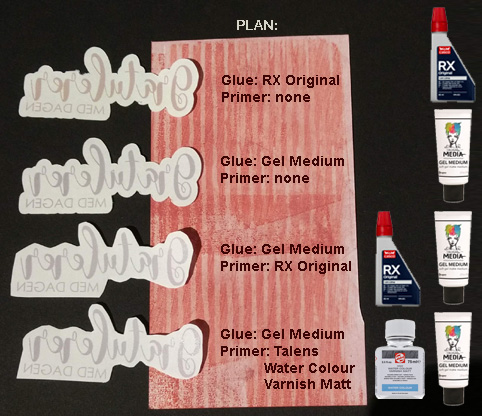
Start testing
The glue is applied as thin as possible using a scrap paper with a straight edge scraping of excess glue to leave as little bumps and gloss as possible.
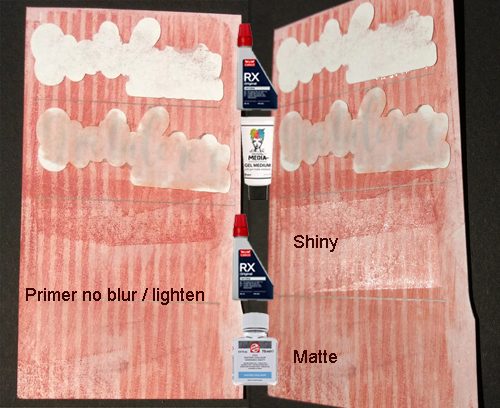
While the glue is wet, one can verify that the glue is applied on all spots as the printed paper is wet and transparent where the glue is. Lighter (dry) spots normally end up with a bad transfer. While drying, the gel medium act as a solvent on the ink and the colour of the background leak through the paper. The dried glue shows what to expect from the different tests. The RX primed background seem to protect the ink.
I use the corner of a cloth diaper to apply water (moisture) to the paper. When the paper is transparent you know it is wet enough and can start removing the paper. First I lift from the edges and finally a rub my finger over to remove all the paper fibers.
Results of glues and primers
The RX original is performing too good as a glue – it will not let go of the paper fibers. The gel medium alone will lighten and blur the background. That could be an intended effect to increase the contrast to the applied element, but normally I would like to keep the background as is. The RX original as a primer together with the gel medium as glue works fine except that I do not like the shiny residuals. This was why I wanted to try the matt varnish, but at least for this test it is not protective enough. Now it is time to try with a thicker layer of varnish.
Optimizing the primer
Again I challenge the technique with a patterened background and a light color of the print to transfer. No I will try to apply the varnish 1 to 3 times to get an increasing thickness of the protective layer. I applied the varnish with a piece of something similar to fun foam. With three layers the matt varnish started to look a bit glossy, but less than one thin layer of RX original. After gluing the printed paper on and while the glue was drying my hope sank as the bleed of ink was present even with three layers of varnish. When removing the paper the three layers of varnish did keep the background best, but the transferred print was lighter and partly not attached.

Maybe all would be better waiting a bit more. Normally it is recommended to wait until the next day to remove the paper from the print. So that will be my next test. How much does the drying time mean to the quality of the transfer print? Maybe I will find patience to try in the future. For now I prefer the RX original as primer and gel medium as glue.
What about vaseline?
I have also applied normal vaseline to cards to protect them from moisture (wet fingers). That works fine, but cannot be used as a primer as nothing will stick to the waxed surface. For this card I have used the RX as primer, gel medium as glue and vaseline around the tag.

